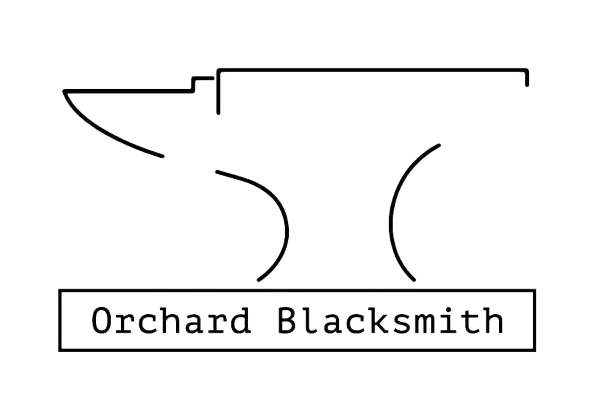Blacksmithing Basics: Perfecting Flattening and Drawing Out Methods
Whether you’re a beginner just starting your blacksmithing journey or an experienced smith looking to refine your skills, mastering the foundational techniques of flattening and drawing out metal is essential. These two processes are at the heart of many forging projects, from making simple hooks to crafting intricate blades.
In this post, we’ll explore what flattening and drawing out are, why they matter, and how you can perfect these techniques for better, cleaner results in your work.
What Is Flattening in Blacksmithing?
Flattening is the process of making a piece of metal thinner and wider by hammering it against the anvil. This technique helps remove irregularities, create flat surfaces, and prepare metal for further shaping. It’s often used when forging knife blades, straps, or decorative elements that require an even, smooth surface.
Why Flattening Matters:
Improves metal consistency: Removes lumps and bumps for a more uniform thickness.
Prepares metal for further work: Makes it easier to create precise shapes.
Strengthens the workpiece: Hammering and compressing the metal refines its grain structure, enhancing strength.
What Is Drawing Out?
Drawing out refers to lengthening a piece of metal while reducing its thickness. Imagine stretching a piece of hot metal into a longer, thinner form — that’s drawing out. It’s a vital technique for creating tapered shapes, rods, blades, and other elongated components.
Why Drawing Out Is Important:
Shapes your work: Forms the foundation for many blacksmith projects.
Controls thickness: Helps you transition from thick stock to fine edges or tips.
Adds precision: Enables you to create custom dimensions for your design.
Tools You’ll Need
Before diving into these techniques, make sure you have:
A sturdy anvil: The flat surface is key for controlled hammering.
A good hammer: Typically, a cross-peen or rounding hammer works well for drawing out; a flat hammer head helps with flattening.
Forge: Properly heated metal is easier and safer to manipulate.
Tongs: For safely holding hot metal.
Safety gear: Gloves, apron, eye protection, and ear protection.
Step-by-Step Guide to Flattening Metal
Heat your metal evenly: Bring it to a bright orange or yellow heat (about 1700°F to 2100°F, depending on your steel).
Place the metal flat on the anvil: Use the anvil face for even hammer strikes.
Use a flat hammer face: Strike the metal firmly and evenly across the surface.
Work from center outwards: Hammer from the middle towards the edges to spread the metal uniformly.
Rotate and flip: Flip the workpiece regularly to maintain an even thickness and flatness on both sides.
Reheat as needed: Metal cools quickly; maintain a workable temperature to avoid cracking or uneven work.
Step-by-Step Guide to Drawing Out Metal
Heat the metal: As with flattening, ensure it reaches a workable temperature.
Position the metal on the anvil: Align the piece so the side you want to lengthen is accessible.
Use a cross-peen hammer: Strike with the peen (narrow) side perpendicular to the length of the metal.
Hammer along the length: The peen directs force sideways, causing the metal to elongate.
Work evenly: Move along the piece in small increments to avoid thinning too much in one spot.
Rotate and flip: Turn the metal as needed to keep the thickness consistent and avoid twisting.
Reheat often: Keep the metal at forging temperature to maintain malleability.
Tips for Success
Keep your hammer strikes controlled: Wild, uneven blows can cause twisting or uneven thickness.
Don’t overheat your metal: Too hot can cause burning or scaling; too cool can cause cracking.
Practice patience: These skills improve with time and repetition.
Use proper hammer angles: Aim for slightly glancing blows rather than straight-down pounding.
Maintain your tools: Sharp edges on the anvil and a balanced hammer make a big difference.
Common Mistakes and How to Avoid Them
Twisting the metal unintentionally: Keep hammer strikes perpendicular and your workpiece aligned.
Uneven thickness:Regularly measure or visually inspect for consistent thickness.
Overworking the metal: Excessive hammering can cause fatigue or cracking — let the metal cool slightly and reheat.
Poor heating technique: Avoid hot spots by heating evenly and rotating the piece in the forge.
Practice Exercises to Build Skill
Flattening a square bar: Heat, flatten, and aim for a consistent rectangular shape.
Drawing out a rod: Start with a thick piece and stretch it into a long, thin rod.
Tapered bar: Practice drawing out one end thinner while maintaining thickness at the other.
Conclusion
Mastering the art of flattening and drawing out metal is a cornerstone of blacksmithing. These fundamental techniques empower you to shape raw steel into functional and beautiful items with precision and confidence. Like any craft, skill develops through consistent practice, attention to detail, and a willingness to learn from mistakes.
If you would like to discuss a potential project with us, please do not hesitate to contact us.
